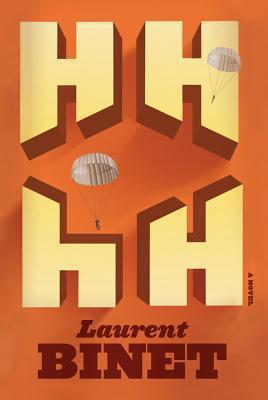
Himmlers brain is called Heydrich: historical fact, alternative play and literary imagination in one
Historical facts evoked and described by a literary author, and then presented in a television programme in which documentary material and the performance of an actor are intertwined: this is how history is kept alive, this is the perfect modus of remembering World War II.
On 27 May 1942 a surprise attack was made on Reinhard Heydrich, the ‘Butcher of Prague’ and Reichsprotektor of Bohemia and Moravia. Four months earlier he had chaired the Wannsee conference in which the decision about the ‘Endlösung der Judenfrage’ was taken. Heydrich died one week after the attack, the Nazis in revenge murdered many boys and men from two villages.
More than 60 years later French author Laurent Binet (1972) writes a novel on the event of Heydrich’s ambush, entitled HHhH, or Himmler’s Hirn heisst Heydrich [Himmler’s brain is called Heydrich] as the Nazis joked. Binet wins the prestigious Prix Goncourt 2010, the novel is translated in many languages and becomes a bestseller. Fascinatingly, the work is not just a narrative on a historic event, it also is an author’s self-reflection on how to write on historical reality without transforming it into fiction. History, according to Binet, is much more romantic and intense than fantasy, but how to make history after so many decades alive again, how to create dialogues and imagine the inner feelings of real-life characters?

Binet’s book depicts what happened in 1942 and at the same time it is a sort of literary manifesto and a critique on the book of fellow writer, Jonathan Littell, who wrote the provocative novel The Kindly Ones (2009) from the viewpoint of imagined SS officer Max Aue. If Littell writes fiction, then I will do real history, Binet decides, and many pages in his book are about how he is addicted to history: to watching History Channel, to playing war games, to reading about the details of micro-history: was Heydrich’s Mercedes black or green, was a certain dog relevant to the story or not: ‘I rather tell an unnecessary detail than to take the risk of missing something fundamental’, Binet muses. The result is an overloaded novel of which The Guardian wrote: ‘it really is a great story; a tale of astounding courage worthy of Binet's claim – "one of the greatest acts of resistance in human history" – and certainly powerful enough, in the end, to overcome whatever qualms one might have about the telling. It isn't that Binet brings any major new information to light, but he marshals and deploys his materials with exceptional dramatic skill’.
Watching the television series is a thought provoking activity. It creates the experience that historical facts are not encapsulated in time, but can be recognized in today’s reality
The dramatic skill of the novel took the attention of the Dutch television maker Roel van Broekhoven, who transformed the novel into a seven episode series, aired in April and May 2017. In the television series the narrative is intertwined with documentary material, films --the attack was the topic of movies in 1965, 1975 and 2016-- photographs, and interviews with Laurent Binet himself. We hear the voice-over of the maker, Van Broekhoven, referring to conversations he had with Binet. So, on television an extra layer of mediation is added to the book: the real facts of history are remediated by using visual material.
And, even more spectacular, a new level of time is presented in the television series as well: German actor Detlef Bothe plays the role of Heydrich, walking in today’s Berlin and Prague with Macbook and iPad, and travelling in a fancy Volkswagen. The scenes in which Bothe appears – he really is a look-alike of Heydrich – are intriguing and disturbing. What are we watching here? These are chronotopical scenes in which several layers of time and space become simultaneous and fluid. The result is confronting: due to the appearance of Heydrich/Bothe parallels between 1942 and today’s Europe come to the fore: migrants who are not welcome, merciless terrorists who create fear (shots of the Bataclan massacre in Paris are used in the series), nationalists who just believe in their own perspective. Watching the television series is a thought provoking activity: the historical narrative, the literary point of view, the film fragments, the play of the actor, the references to what is going on today: all this leads to the experience that historical facts are not encapsulated in time, but can be recognized in today’s reality.
Journalists (have to) report empirical facts, literary authors can combine facts with imagination, actors can bring a historical character to life. And when these various activities are brought together, something new emerges, something that should not cynically be considered ‘a fictive truth’ but that can be referred to as the ‘truth of imagination’. Sixty years after World War II, we need imagination to keep the stories alive, to tell detailed narratives even when the witnesses are gone. Remembering the atrocities of history, remembering the Holocaust, should not only be done by performing the somewhat static ritual of laying flowers on the Dam square on the evening of 4 May; it can be done by making complicated and challenging television programmes such as HHhH, and stimulating the public to construct mental representations in their own minds. ‘My story is told’, Binet writes at the end of his novel, ‘and my book should be finished too, but I notice that it is impossible to get rid of such a story’. This is not a postmodern slogan, but, I think, a deeply felt concern about keeping history alive. Keeping it productive in art and popular culture.